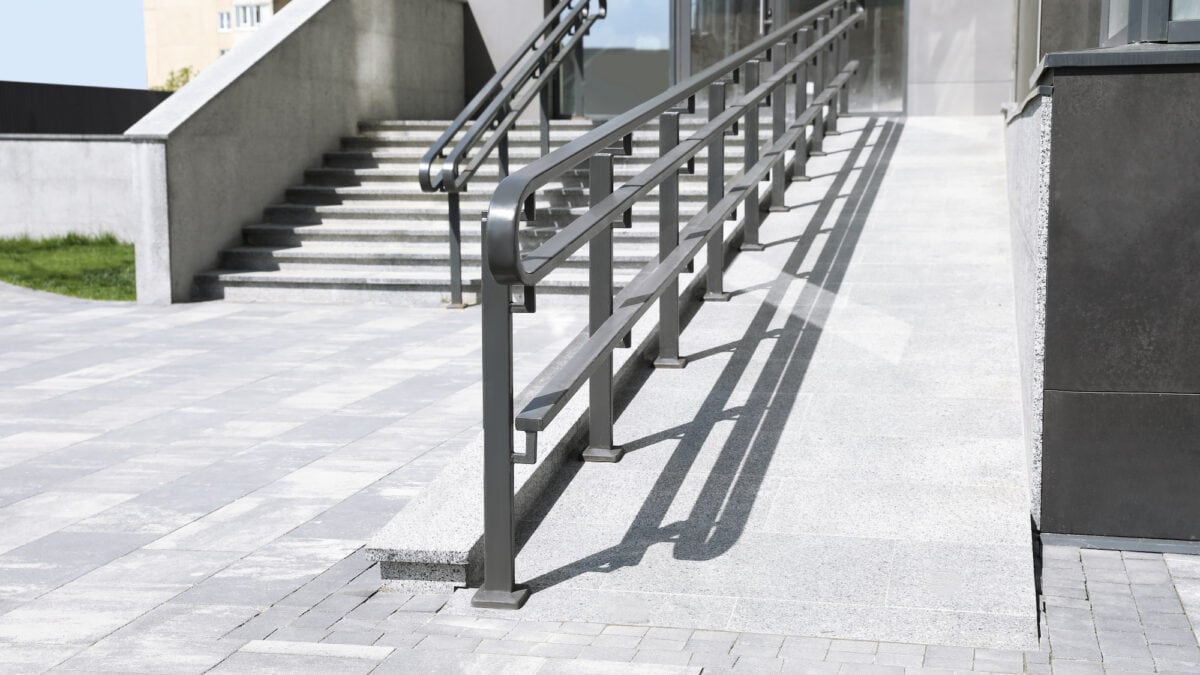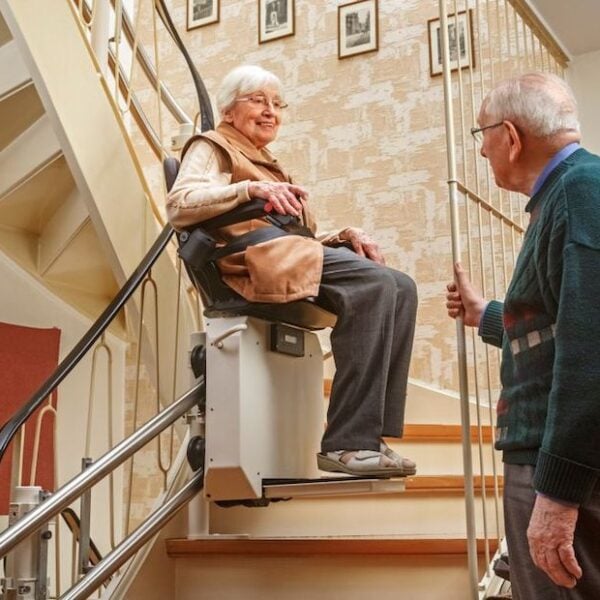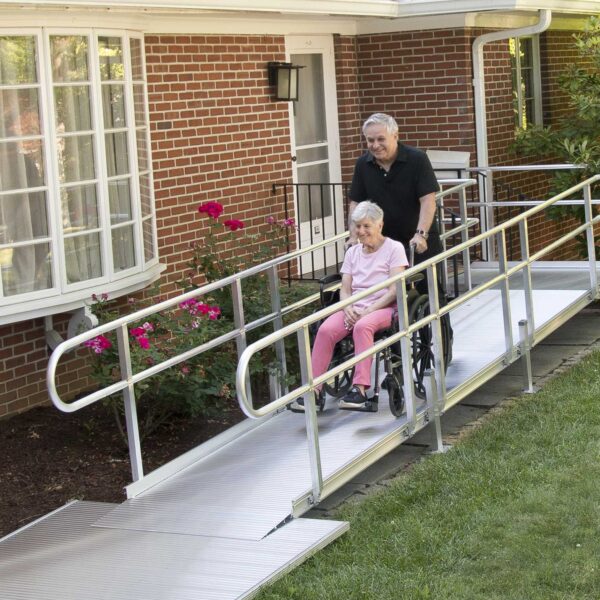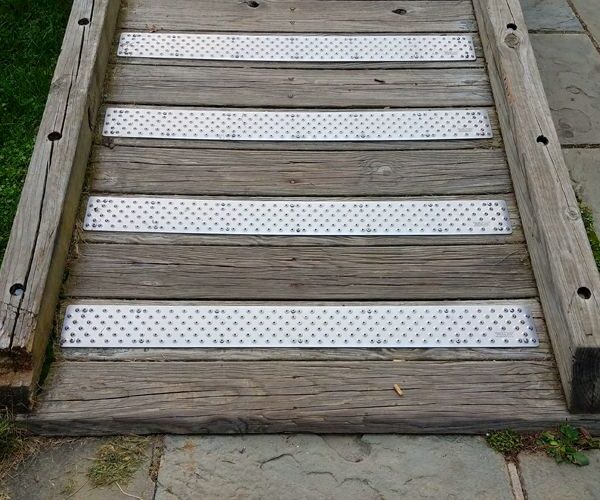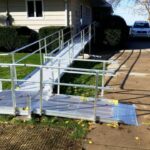Wheelchair ramps serve as vital gateways, fostering independence and ensuring safe access for those with mobility challenges. A skilled wheelchair ramp installer such as CAPS Remodeling specializes in creating these passageways, ensuring each wheelchair ramp installation meets individual needs and regulatory standards. Enhanced accessibility begins with choosing a reliable service that values safety and functionality. In this article, readers will uncover the pivotal steps and considerations that lead to a successful wheelchair ramp installation, revealing how expert services like CAPS Remodeling can transform spaces into welcoming environments for everyone.
Exploring Wheelchair Ramp Installation Services for Accessibility
Access to buildings and homes for individuals with disabilities hinges not merely on the existence of wheelchair ramps but on their proper installation and design. Employing skilled installers who understand the intricacies of different materials, such as aluminum, and components like handrails, is imperative to ensure seamless navigation over stairs and thresholds. Different ramp types address unique challenges and preferences, ranging from threshold ramps for single-step entry to modular solutions that accommodate complex architectures. Each installation phase, conducted by professionals, is executed precisely, considering the user’s specific needs and the site specifications.
Selecting an appropriate wheelchair ramp requires a careful assessment of individual requirements in conjunction with the physical attributes of the installation site. Adherence to ADA guidelines guarantees legal compliance and affirms the commitment to inclusivity. Furthermore, safety remains paramount, demanding thorough scrutiny of factors such as ramp incline, surface traction, and the stability of handrails, underpinned by the assurance of robust insurance policies to mitigate potential liabilities.
Importance of Hiring Skilled Installers for Wheelchair Ramps
The selection of a professional installation team to erect wheelchair ramps impacts the user’s mobility and safety. These experts, who are proficient in working with a wide range of materials, including wood and steel, ensure that the transition from scooters or wheelchairs to alternate mobility solutions like elevators or stair lifts is not hindered by poor construction. Consequently, the installer’s expertise plays a critical role in transforming a mere architectural addition into a secure and reliable conduit to accessibility.
| Material | Type of Ramp | Application |
|---|---|---|
| Aluminium | Modular | Complex Architectures |
| Wood | Permanent | Residential Homes |
| Steel | Portable | Commercial Buildings |
Types of Wheelchair Ramps: From Threshold to Modular
Each type of wheelchair ramp, whether a minimal threshold design or a comprehensive modular system, integrates features like grab bars to boost users’ confidence and safety. Determining the correct ramp involves evaluating several elements, including the desired length, directly influencing the price. Robust materials like concrete ensure lasting durability and provide peace of mind to both users and installers.
Steps Involved in Professional Wheelchair Ramp Installation
Dedicated teams install wheelchair ramps with meticulous attention to the surrounding weather conditions, which can influence the choice of materials and the timing of the project. For instance, specific metal options are preferred for their resistance to corrosion in wet climates, ensuring a lasting solution for navigating over curbs. Installers stay informed about funding options such as Medicare to advise clients on possible assistance and typically maintain open communication channels, such as email, to provide the most up-to-date information and support to those requiring accessibility services.
How to Choose the Right Wheelchair Ramp for Your Needs
Selecting a suitable wheelchair ramp involves a nuanced understanding of the ramp’s height relative to the entry point to ensure compatibility and ease of access. When considering a purchase, one should also evaluate the warranty offered, which is a testament to the manufacturer’s confidence in the durability and performance of their product. Additionally, gathering comprehensive information regarding health insurance or Medicaid support eligibility can provide financial relief to those needing accessibility solutions.
Ensuring ADA Compliance in Wheelchair Ramp Installation
Adhering to the Americans with Disabilities Act (ADA) during the installation of wheelchair ramps protects individuals in assisted living facilities by ensuring a safe and navigable slope. Professionals meticulously adhere to the ADA mandate of a maximum 1:12 slope ratio, which dictates a one-inch rise for every foot of the ramp, aligning with the essential criteria for a compliant ramp. Careful planning and adherence to these standards prevent financial strains and ensure that installations are within the client’s budget, circumventing the need for future modifications that might disrupt the payment cycle.
Safety Features and Considerations in Ramp Installation
Safety features are paramount during the installation of wheelchair ramps, particularly when considering that a flawed ramp can become an obstacle rather than a facilitative structure. A Google search reveals ample incidents where insufficient space or the misjudgment of a wheel’s grip led to accidents. Adequate width, edge protection, and slip-resistant materials are essential, particularly when ambulances require swift and secure hospital access, ensuring they can navigate these spaces safely and without hindrance.
Navigating the Process of Wheelchair Ramp Installation
Installing a wheelchair ramp begins with an in-depth consultation with a qualified installer. This process is as crucial for a quaint home in Madison Heights as it is for a bustling warehouse requiring enhanced access. Each consultation leads to tailored design solutions that address diverse accessibility needs, considering the unique layout and requirements of the premises. Before construction, preparations are made to ensure the home or business environment is conducive to a smooth installation, encompassing adjustments that might be as minor as moving furniture or as significant as altering structural elements. On the installation day, clients can anticipate a team of professionals diligently executing the project, adhering strictly to the agreed terms of service. Following installation, providers offer comprehensive support and maintenance, like the aftercare provided for a new shower installation, to ensure ongoing safety and satisfaction for all users.
Initial Consultation With a Wheelchair Ramp Installer
During the initial consultation, a professional installer evaluates the site’s exposure to weather elements like rain to determine the best ramp option that resists rust and corrosion.
| Weather Element | Material Option | Accessibility Enhancement | Funding Resource |
|---|---|---|---|
| Rain | Rust-resistant | Patient Lift | Medicare Advantage |
Custom Design Solutions for Unique Accessibility Needs
Custom design solutions offer tailored accessibility, catering to each client’s space and needs, whether for a temporary situation requiring renting or permanent residence adjustments. These designs incorporate considerations for safe transport over the ramp on every foot of travel, ensuring an optimal blend of safety and function. Moreover, such customized ramps integrate seamlessly with durable medical equipment, enhancing overall mobility and independence.
- Evaluating the need for either temporary renting solutions or permanent ramp installation.
- Assessing transport and travel routes ensures a secure progression over the ramp’s length.
- We are incorporating durable medical equipment compatibility for uninterrupted accessibility.
Post-Installation Support and Maintenance
Following the installation of a wheelchair ramp, providers in Madison Heights extend comprehensive post-installation support, ensuring any issues relating to maintenance can be swiftly addressed within the client’s zip code. This support, generally included as part of the service or available for a nominal fee, is critical in upholding the safety and longevity of the accessibility solution.
Benefits of Professional Wheelchair Ramp Installation
Investing in a professional wheelchair ramp installation service offers more than mere convenience; it is a transformative decision that directly impacts the lives of individuals with mobility challenges. Beyond personal gain, such ramps bolster the property’s overall accessibility, potentially increasing its value. Professionals provide customized solutions, aligning with each individual’s unique needs and preferences for a compact car porch or a sprawling residential entrance. Moreover, these ramps focus on long-term safety and durability, ensuring a steadfast support system for years.
Enhancing Mobility and Independence
For customers seeking to regain autonomy, an expert team can install a wheelchair ramp to improve their quality of life significantly. With an ADA-compliant slope ratio ensuring effortless transition and specialized design prioritizing health and safety, individuals gain newfound freedom and the confidence to navigate their environment unassisted. Moreover, flexible financing options, such as personal loans, often ease the financial burden, making accessibility upgrades more attainable.
Increasing Property Value and Accessibility
Investment in the professional installation of a wheelchair ramp frequently results in a dual advantage: enhancing the accessibility of a property and potentially increasing its market value. Accurate measurement of the site ensures the cost to install a wheelchair ramp aligns with the homeowner’s financial and architectural constraints, while the cost to install a handicap ramp reflects in the property’s enhanced appeal to a broader range of prospective buyers:
- Reviewing the financial benefits linked to increased property value post-installation.
- Considering the potential for broader accessibility and its appeal to future buyers.
- Assessing the specific site and ensuring cost-effective installation procedures.
Customized Solutions Tailored to Individual Needs
The ramp installation industry professionals take pride in crafting functional and deeply attuned pathways to their users’ lifestyles. They pay attention to details such as the angle of ascent and appropriate sizing, ensuring seamless integration with existing structures to create solutions that support independence while respecting aesthetic preferences.
Long-Term Safety and Durability
Professionals approach the installation of wheelchair ramps, focusing on constructing a safe and enduring passage that will serve users faithfully over the years. They utilize robust materials and employ advanced techniques to ensure that the ramp can withstand the rigors of daily use while maintaining its structural integrity and safety features.
Common Wheelchair Ramp Installation Mistakes to Avoid
In enhancing accessibility through the installation of wheelchair ramps, attention to detail is not merely a recommendation but an obligation. Overlooking the stringent requisites of local building codes often leads to legal ramifications and additional expenses, while choosing incorrect materials may result in degradation and loss of function over time. Similarly, a lapse in calculating the precise gradient required for the ramp’s slope compromises user safety and accessibility, diminishing the ramp’s efficacy. Equally significant is using materials that can resist the ravages of severe weather conditions, ensuring the ramp remains safe and navigable year-round. These common pitfalls underscore the need for rigorous planning and informed decision-making in installing wheelchair ramps.
Overlooking Local Building Codes and Regulations
Wheelchair ramp installations that do not adhere to local building codes and regulations often lead to non-compliant projects that lack essential safety measures. Neglecting to consult and follow these standards can result in fines and the necessity for costly revisions, ultimately undermining the accessibility the ramp is meant to provide.
| Aspect | Compliance Requirement | Potential Outcome of Non-compliance |
|---|---|---|
| Ramp Dimensions | In accordance with ADA Standards | Compromised Safety, Legal Penalties |
| Materials Used | Durability and Weather Resistance | Increased Maintenance Costs, Ramp Deterioration |
| Slope Gradient | Specific Ratio as per Code | Reduced Accessibility, Potential Accidents |
Choosing the Wrong Type of Ramp Material
Selecting an inappropriate material for a wheelchair ramp can lead to rapid deterioration, rendering the ramp unsafe and ineffective: metal ramps prone to rust in coastal climates, for example, can compromise the structural integrity and result in costly repairs or replacements. A detailed assessment by professionals helps ensure the chosen material meets the specific environmental and usage demands, thereby prolonging the ramp’s life span and functionality.
- Performing a comprehensive environment and usage assessment to identify the most suitable material.
- Ensuring the selected material provides durability to avoid frequent maintenance or replacement.
- Choosing a material that guarantees safety and longevity under specific climatic conditions.
Underestimating the Importance of Proper Slope
A ramp with an incorrectly calculated slope poses a significant risk. It may become too steep for safe and effortless use and increase strain on the wheelchair user and the equipment. Professionals employ precision in their calculations to adhere to recognized safety standards, guaranteeing a gentle and manageable incline for all users.
Ignoring the Need for Weather-Resistant Materials
Selecting materials that fail to withstand diverse weather conditions for a wheelchair ramp can lead to rapid wear and safety hazards. Professionals recommend options like treated lumber or high-grade metal alloys that endure harsh climates, from freezing temperatures to blazing sunlight, ensuring the structure remains secure and accessible throughout the seasons.
DIY vs. Professional Wheelchair Ramp Installation: A Comparison
When contemplating the installation of a wheelchair ramp, individuals are often faced with the choice between embarking on a do-it-yourself project and enlisting the services of professional installers. This decision weighs heavily on one’s capacity to accurately gauge their construction expertise and recognize the potential perils of improper installation. While a self-executed project may offer initial cost savings, hiring professionals can provide substantial advantages, from their proficiency to the assurance that comes with warranties on artistry. Engaging with professionals also has financial implications; However, the upfront investment may be higher, and the long-term savings attributable to reduced maintenance and avoidance of future modifications can prove substantial, thus highlighting the economic efficiency of professional services.
Assessing Your DIY Skill Level and Understanding Risks
When contemplating a do-it-yourself approach to wheelchair ramp installation, individuals must appraise their construction skills honestly and be aware of the risks involved in such projects. Inadequate construction knowledge or experience can lead to structural failures that jeopardize both safety and accessibility; such circumstances may demand costly reparations or, worse, result in personal injury.
Benefits of Professional Installation: Expertise and Warranty
Enlisting the services of professionals for wheelchair ramp installation offers assurance in two significant forms: unmatched expertise and a comprehensive warranty. Experts in the field bring a wealth of experience in understanding local codes and possessing the skills necessary to ensure precise, safe, and efficient installations that stand the test of time. Moreover, these services often come with warranties that protect homeowners against defects in materials and workmanship, offering peace of mind with their investment.
| Professional Service Advantage | Details |
|---|---|
| Expertise | Skilled installation aligned with local codes and safety standards |
| Warranty | Protection against material defects and installation workmanship |
Cost Analysis: Saving Money in the Long Run With Professionals
Opting for professional installation of a wheelchair ramp can be economically advantageous over time. Professionals ensure a correct and safe setup and avoid costly errors that could necessitate repairs or modifications. Efficiently engineered ramps, incorporating the correct materials and adherence to regulations, typically deliver a longer lifespan and require less frequent maintenance:
- Advanced skill set ensures compliance with safety codes, preventing future expenditures on legal issues or retrofitting.
- A one-time investment in professional installation can reduce the long-term costs associated with amateur errors and subsequent damage.
- Well-constructed ramps by professionals are less likely to need replacements, conserving financial resources over time.
How to Select the Best Wheelchair Ramp Installation Service
Choosing a service provider for wheelchair ramp installation involves thoughtful consideration, as this essential home modification can significantly impact the daily life of individuals with mobility challenges. The selection process is determined by critical factors such as experience, material expertise, adherence to ADA standards, and the provider’s track record. Prospective clients should prepare a list of focused questions to gauge the installer’s qualifications, ensuring their choice aligns with the project’s demands. It is equally beneficial to consult reviews and solicit personal recommendations to gather insights into the service quality and customer satisfaction levels. Moreover, obtaining detailed quotes from multiple providers facilitates the comparison of costs and service inclusions, an exercise critical to making an informed decision that balances practicality with budgetary considerations.
Key Factors to Consider When Choosing a Service Provider
When selecting a provider for wheelchair ramp installation, scrutinizing their prior work, customer testimonials, and familiarity with ADA requirements presents crucial insight into the quality of their services. A reputable company should offer transparency about their insurance and any guarantees on their installations’ longevity and safety, reducing the homeowner’s risk.
Questions to Ask Before Hiring a Wheelchair Ramp Installer
Before engaging the services of a ramp installer, it is prudent to inquire about their experience with ADA-compliant designs and request evidence of completed projects. Ask whether they provide an official quote after a site evaluation and if it encompasses all costs — materials to labor. Ensuring clarity on these points will help avoid unexpected expenses and confirm the installer’s competence in delivering a solution that meets both regulatory standards and personal requirements.
Reading Reviews and Soliciting Recommendations
Exploring the opinions of previous clients through online reviews can reveal a wealth of information about a service provider’s professionalism and the quality of their wheelchair ramp installations. Additionally, seeking out personal recommendations from acquaintances who have had ramps installed can provide trustworthy insights and help guide the selection of a reliable installer.
Evaluating Quotes and Understanding Service Inclusions
Gathering and examining quotations from service providers requires careful analysis of the projected costs and the extent of services covered. Clients should ensure their chosen quote specifies the range of services—such as design, materials, installation, post-installation support, and any applicable warranties—affording a clear understanding of what they will receive for the investment they are making.
Frequently Asked Questions
What factors determine the best wheelchair ramp design for installation?
Selecting the ideal wheelchair ramp design hinges on several critical factors, including the user’s mobility level, the site’s specific characteristics, available space, materials, compliance with local building codes, and budget constraints.
How does one begin the wheelchair ramp installation process?
To initiate wheelchair ramp installation, one should assess the needed length and incline, choose materials, secure permits if necessary, and either engage a professional installer or follow detailed DIY guidelines.
What are the key benefits of hiring a professional for ramp installation?
Hiring a professional for ramp installation ensures safety compliance, delivers efficient and durable results, and saves time by avoiding costly errors.
Which common errors should be avoided during ramp installation?
Improper slope, insufficient anchoring, and neglecting weather adaptations are vital mistakes to avoid during ramp installation.
How should I choose a reputable ramp installation service provider?
Selecting a reputable ramp installation service entails verifying their credentials, assessing customer feedback, and evaluating their experience with ADA compliance to ensure safe and dependable workmanship.
Wheelchair ramp installation services are vital in promoting independence and safety for those with mobility challenges, offering customized solutions to meet various needs and settings. Professionally installed ramps, which adhere to ADA standards, ensure smooth and safe access to homes and public buildings. The suitable materials and design, guided by expert installers, provide long-lasting durability and weather resistance, contributing to the ramp’s functionality and the user’s confidence. Ultimately, these services not only enhance the quality of life for individuals requiring wheelchair access but also potentially increase property values.

Introducing Jeff Cates, the visionary Founder and Owner of CAPS Remodeling. After experiencing a profound personal event involving his son in 2007, Jeff was inspired to serve a higher purpose: to create safer, more comfortable, and independent living conditions for the elderly and disabled by modifying their current homes. Jeff’s deep-seated religious beliefs form the moral compass that steers CAPS daily operations. Apart from his unwavering dedication to his work, Jeff finds joy in boating and cherishing moments with his family.

